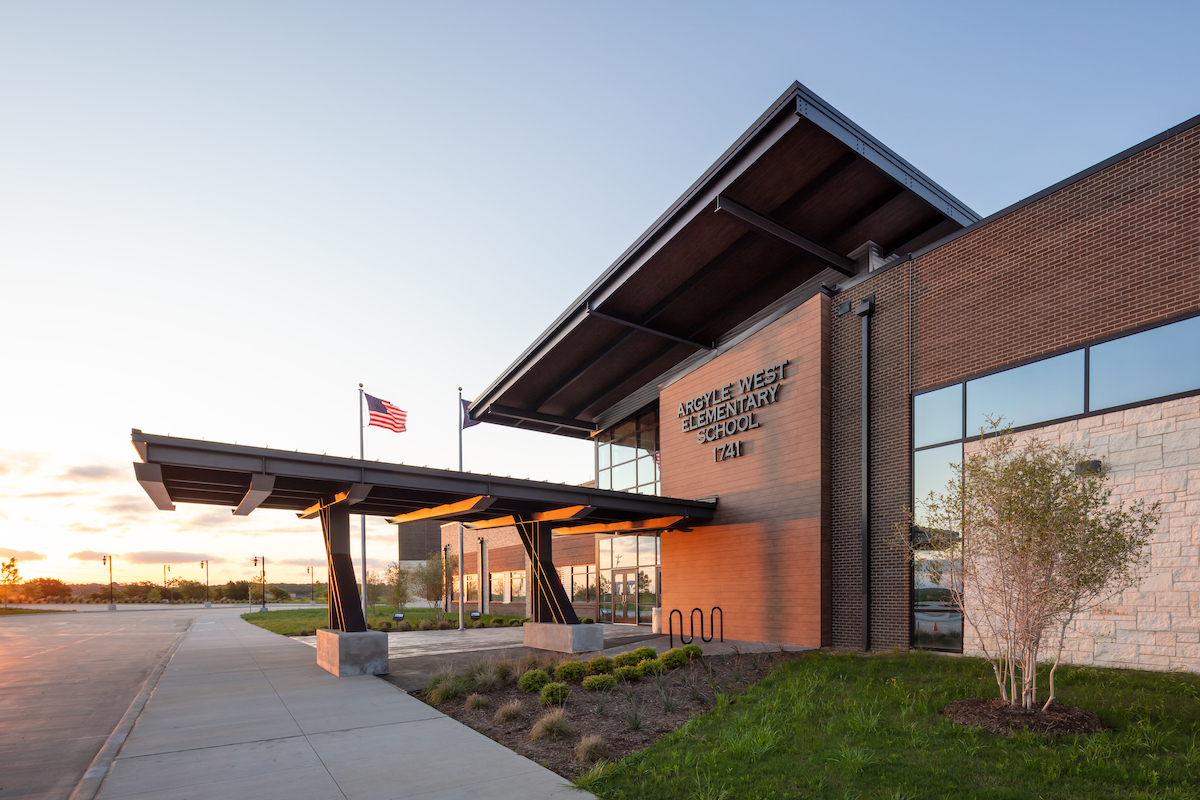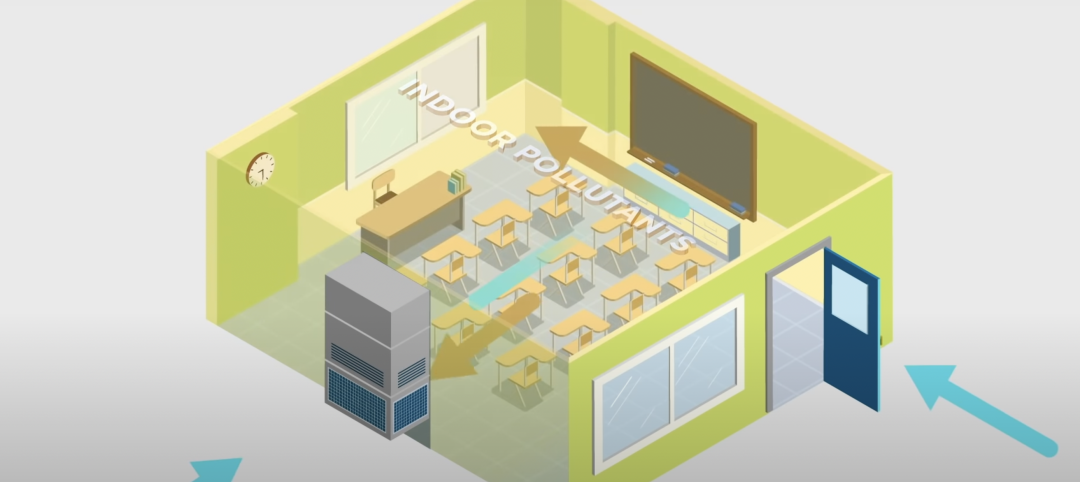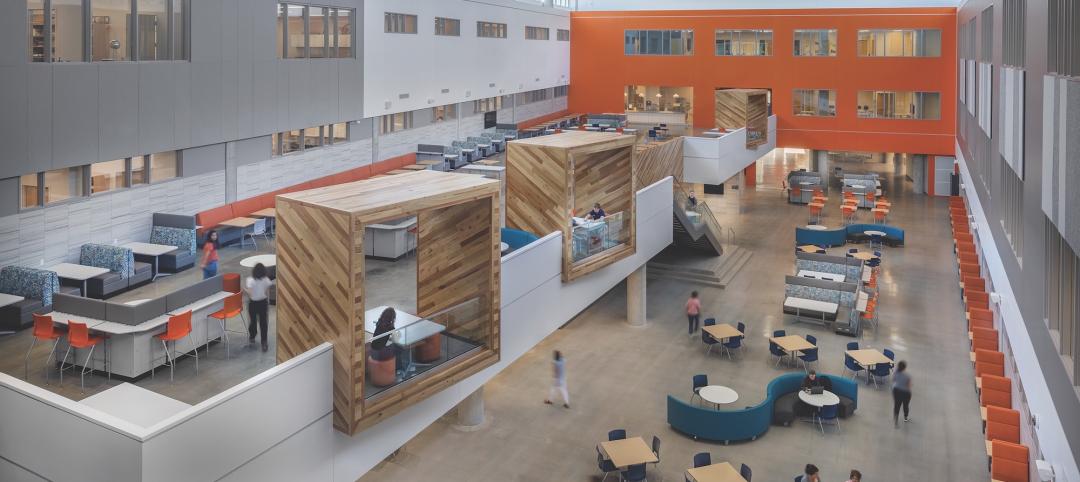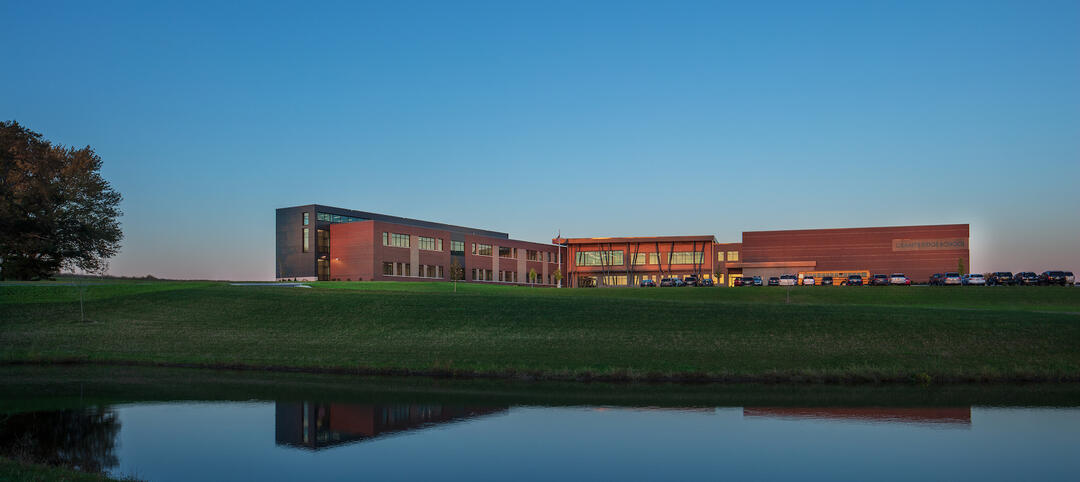K-12 schools in Mississippi began reopening in late July. By August 13, 39 counties—half of that state’s total—had schools reporting positive coronavirus cases that included 109 teachers and 69 students. More than 250 teachers and staff and 489 students were quarantined. On August 17, Gov. Tate Reeves announced COVID-19 testing for all teachers and emergency telehealth coverage for schools.
Also being tested, in Mississippi and elsewhere across the nation, are the decisions that school districts made about social distancing, sanitization, and online learning to present environments where students and teachers can feel safe.
“Right now, we’re holding our breath, to some degree,” says Dan Davis, Senior Vice President with CG Schmidt, the Milwaukee, Wis.-based construction company. “This pandemic really showed us how ill-prepared we were to face this kind of situation. Unfortunately, we don’t think anyone can really say with confidence that they have a good picture of the long-term effects of the pandemic on the market.”
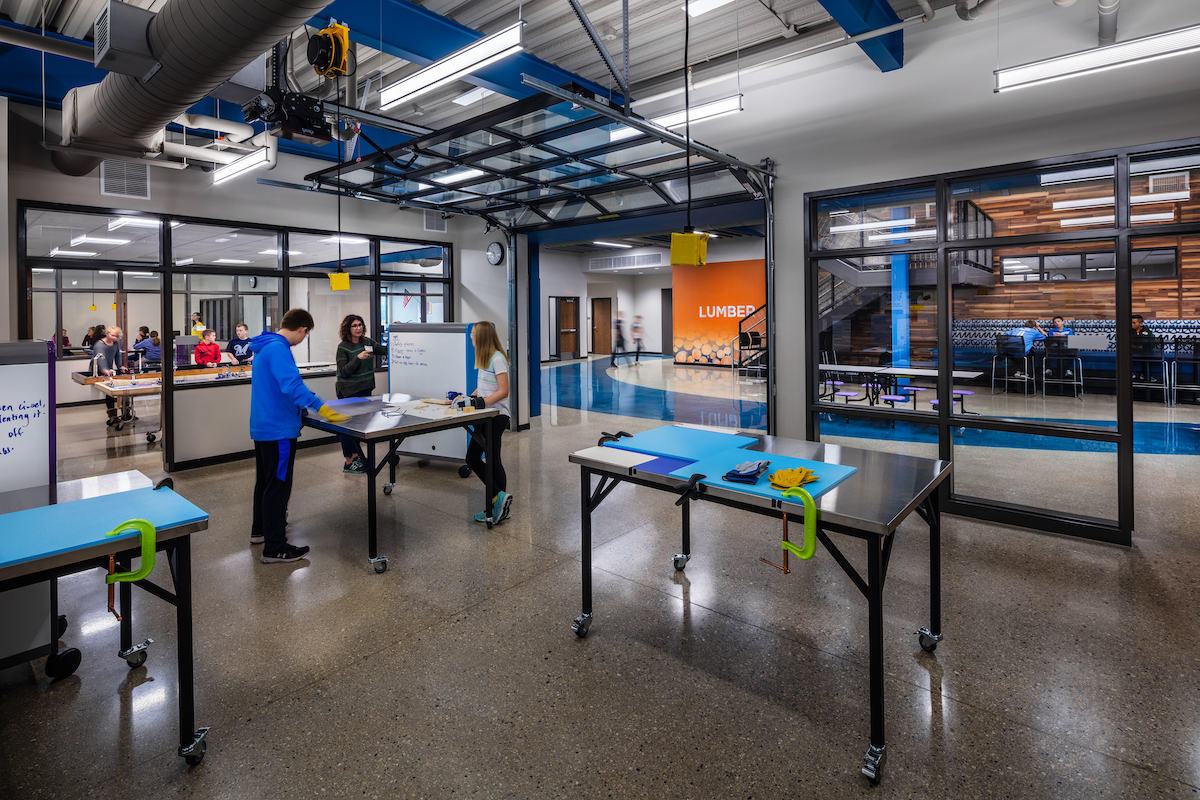
The $30.9 million Sheboygan Falls (Wis.) Middle School replaced a building that was more than a century old. Its design, by EUA Architects, focuses on the concept of a “Learning River” that winds its way through the school, and leads to each of the grade “villages” representing the area’s identifying elements: falls, river, mills, and lumber. CG Schmidt was the contractor. Photo courtesy EUA
The K-12 sector has been somewhat less affected by the virus in terms of project delays or postponements, say AEC sources. What’s different, however, is “that everything is constantly changing,” says Steve Hulsey, President of Corgan. “The urgency of the pandemic highlighted the need for schools to consider gaps in agility, and opportunities to improve response procedures.”
Hulsey, echoing other AEC execs, adds that COVID-19 “has reinforced the fundamental need for human interaction, collaboration, and the learning that happens through in-person experiences and groups.” Jim French, FAIA, Senior Principal and Global K-12 Education Practice Leader for DLR Group, believes the pandemic can be a “catalyst for positive change” that leads to showing that “learning can happen anywhere.”
Altering K-12 school construction plans
There were some immediate changes that schools made in order to reopen for the fall semester. These included HVAC upgrades, installing indirect UV lighting, and modifying classrooms, says Susan Tully, LEED AP BD+C, Senior Project Manager at Gilbane Building Company. Learning spaces are flexible and adaptable. Some schools also focused on expanding their health and wellness suites.
“Our clients’ priorities are changing,” says Gil Fullen, Vice President of Business Development for Balfour Beatty’s California buildings team. School districts there are deferring projects like sports fields and asking instead for new infrastructure and modernization that support distance learning.
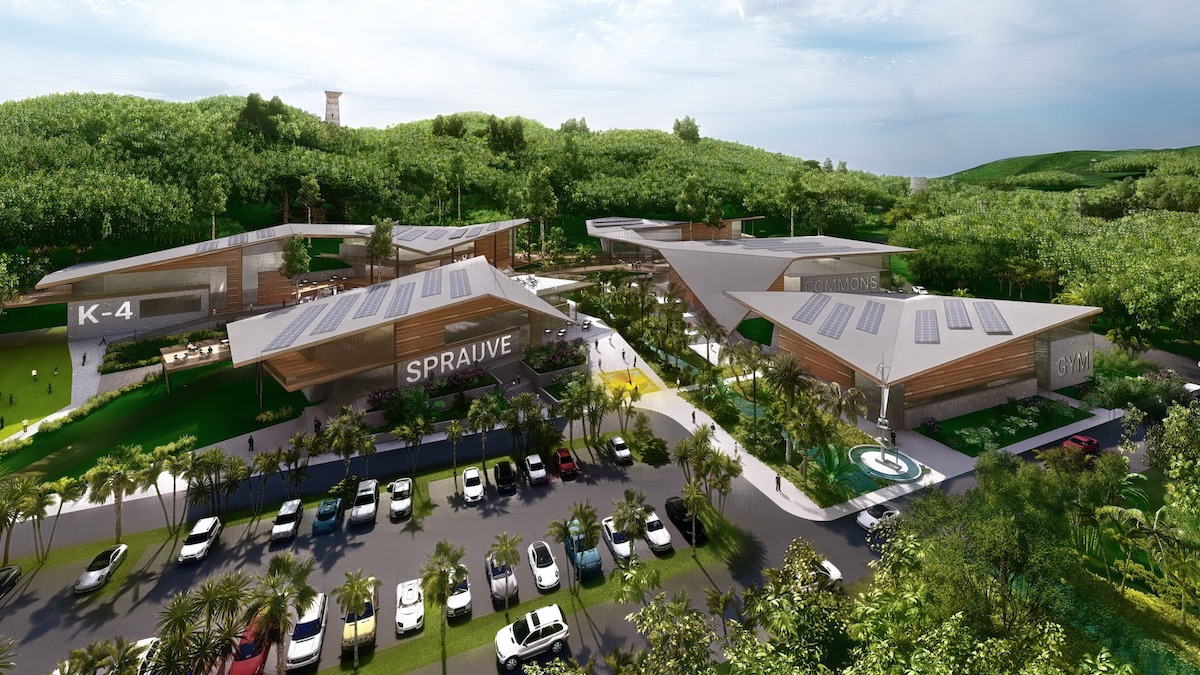
DLR Group recently completed an education facilities master plan for the U.S. Virgin Islands’ Department of Education, which oversees 10,000 students. The master plan called for the reduction of facilities to 18 from 32. Six schools will be constructed and 12 renovated or expanded by 2025. Shown is the Julius Sprauve school on St. John. Rendering: DLR Group
Huckabee, which specializes in education design, this summer was in the middle of bond planning for two high schools in the Wichita Falls, Texas, Independent School District. “The community has been very forward thinking in their design response, as they build on an existing platform of distance learning,” says Konrad Judd, AIA, LEED AP, RID, the firm’s Chief Design Officer. He elaborates that a hybrid model of instruction will require fewer classrooms and more common and collaborative spaces, with an emphasis on adaptability. “The design is less about a direct response to COVID-19 and more about a solution that supports long-term instructional and safety needs,” says Judd.
Corgan’s Hulsey adds that K-12 security concerns are now more “layered” and consider threats such as infectious diseases.
Involving the community in K-12 school design
AEC sources agree that technology in the form of enhanced IT and mechanical systems is now central to any school improvement or new construction. “Features that are ‘luxury’ now—like touchless faucets and toilet systems—will become a minimum standard for school facilities,” says Jake Nabholz, President of contractor Nabholz.
Fullen of Balfour Beatty says his firm has been using virtual and augmented reality and BIM tools to keep its K-12 jobsites safe and to share information with clients. Corgan’s Hulsey sees VR and AR technologies opening shared learning vistas for students and teachers.
‘This pandemic really showed us how ill-prepared we were to face this kind of situation.’
— Dan Davis, CG Schmidt
With the pandemic still lurking, the longer-term design and construction objectives of some K-12 school districts are shifting toward their facilities serving the greater community, say AEC sources. “The actual school facilities are now, more than previously, understood to be a place of shelter, service, and a public resource,” says Gilbane’s Tully.
DLR Group’s Principal Todd Ferking blogged recently about a “community-based learning model” that allows students to take greater advantage of public spaces, like libraries and fitness centers, as a means toward reducing the buildings inventory that school districts have to operate and maintain.
Integrating schools with their communities is a smart tactic when getting voters to approve funding for school construction and renovation has gotten harder. “If the economy worsens, voters may reject significant bond referendums that they would traditionally support,” cautions DLR Group’s French.
GC Schmidt’s Davis predicts that school boards will be hesitant to pursue mega referendums during the recession. “We aren’t going to see a lot of $100 million new high schools or athletic or performing arts centers until we have a better understanding as to the endgame for the virus.” Over the next 12 to 18 months, Davis believes that schools are more likely to take a “two-stage” approach that focuses first on disease control within their existing operating and maintenance budgets, and second on using new funding to upgrade HVAC and MEP systems. He adds that more districts are availing themselves of federal grants to purchase advanced technologies like modular ionization bars.
Huckabee’s Chief Operations Officer Tom Lueck projects a 25-30% drop in the education market this year. He says that many Texas school districts delayed their bonds by six to 12 months or more. “Without bond elections, school districts don’t have the capital for major construction projects.” Consequently, Huckabee’s focus, until there’s an economic rebound, “is helping clients realize their potential in existing spaces,” he says.
ALSO SEE: The rise of inquiry-based learning in K-12 communities
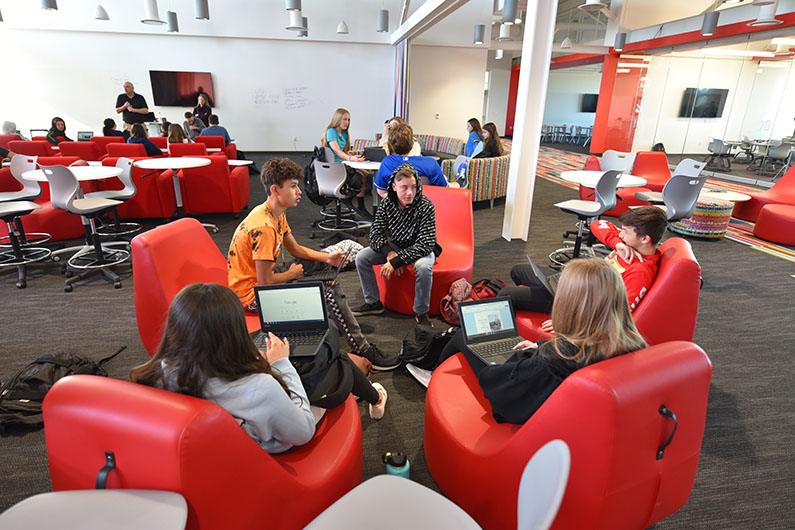
Inquiry-based education offers a methodology that does not rely solely on the educator being the lead in all learning, writes DLR Group's Emily Froese. Read the article.
Ken Hutchens, VLK Architects’ Principal and Chief Creative Officer, corroborates Lueck’s comments about bond election postponements in Texas. He also notes that many school districts accelerated projects to take advantage of lower construction costs. “Therefore, architecture firms are burning through backlogged work, with minimal work in the pipeline for 2021.”
Still, Hutchens is cautiously optimistic about VLK’s K-12 prospects, even while anticipating that bond referendums are likely to be more conservative. He notes that in some urban areas in Texas, single-family homebuilding is “brisk,” which ultimately could create the need for new school facilities.
Gilbane’s Tully observes, parenthetically, that more school districts are looking for alternate funding, such as public-private partnerships. And Nabholz has seen some districts favor energy performance contracts that potentially generate operational savings.
Nabholz notes, however, that the coronavirus, scarcer financing, and a recession aren’t the only factors holding back K-12 school construction and renovation. The U.S. birth rate increased by 0.09% in 2019, after falling four consecutive years to its lowest level in more than three decades. “Class sizes have peaked and are trending downward,” Nabholz observes. “This, more than the pandemic, will affect the future of K-12 education building.”
Related Stories
HVAC | Dec 13, 2022
Energy Management Institute launches online tool to connect building owners with HVAC contractors
The National Energy Management Institute Inc. (NEMI) along with the Biden administration’s Better Air in Buildings website have rolled out a resource to help building owners and managers, school districts, and other officials find HVAC contractors.
Education Facilities | Nov 30, 2022
10 ways to achieve therapeutic learning environments
Today’s school should be much more than a place to learn—it should be a nurturing setting that celebrates achievements and responds to the challenges of many different users.
K-12 Schools | Nov 30, 2022
School districts are prioritizing federal funds for air filtration, HVAC upgrades
U.S. school districts are widely planning to use funds from last year’s American Rescue Plan (ARP) to upgrade or improve air filtration and heating/cooling systems, according to a report from the Center for Green Schools at the U.S. Green Building Council. The report, “School Facilities Funding in the Pandemic,” says air filtration and HVAC upgrades are the top facility improvement choice for the 5,004 school districts included in the analysis.
Energy-Efficient Design | Nov 14, 2022
How to achieve net zero energy in five steps
Martine Dion and Ethan Seaman share net zero energy best practices with owners and developers.
K-12 Schools | Nov 1, 2022
Safety is the abiding design priority for K-12 schools
With some exceptions, architecture, engineering, and construction firms say renovations and adaptive reuse make up the bulk of their work in the K-12 schools sector.
BAS and Security | Oct 19, 2022
The biggest cybersecurity threats in commercial real estate, and how to mitigate them
Coleman Wolf, Senior Security Systems Consultant with global engineering firm ESD, outlines the top-three cybersecurity threats to commercial and institutional building owners and property managers, and offers advice on how to deter and defend against hackers.
Education Facilities | Oct 13, 2022
A 44-acre campus serves as a professional retreat for public-school educators in Texas
A first-of-its-kind facility for public schools in Texas, the Holdsworth Center serves as a retreat for public educators, supporting reflection and dialogue.
K-12 Schools | Sep 21, 2022
Architecture that invites everyone to dance
If “diversity” is being invited to the party in education facilities, “inclusivity” is being asked to dance, writes Emily Pierson-Brown, People Culture Manager with Perkins Eastman.
| Sep 7, 2022
K-8 school will help students learn by conducting expeditions in their own communities
In August, SHP, an architecture, design, and engineering firm, broke ground on the new Peck Expeditionary Learning School in Greensboro, N.C. Guilford County Schools, one of the country’s 50 largest school districts, tapped SHP based on its track record of educational design.
Giants 400 | Sep 1, 2022
Top 100 K-12 School Contractors and CM Firms for 2022
Gilbane, Core Construction, Skanska, and Balfour Beatty head the ranking of the nation's largest K-12 school sector contractors and construction management (CM) firms for 2022, as reported in Building Design+Construction's 2022 Giants 400 Report.


